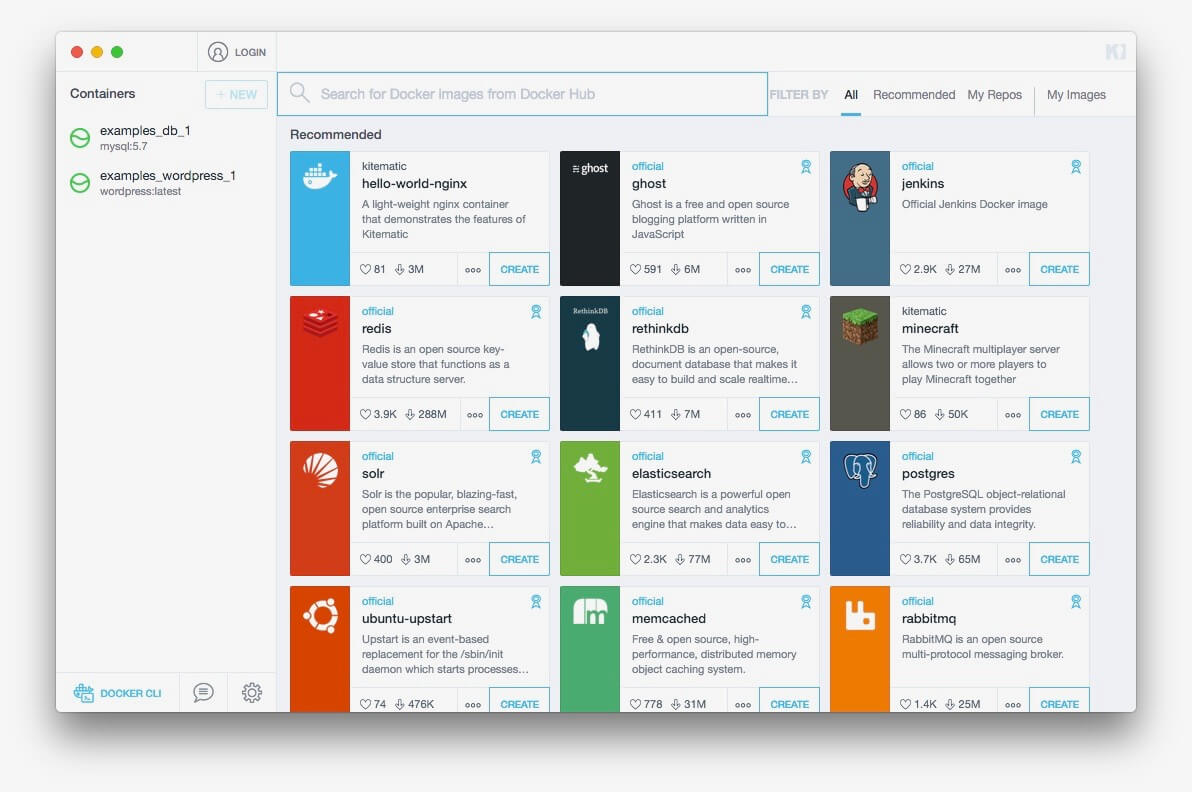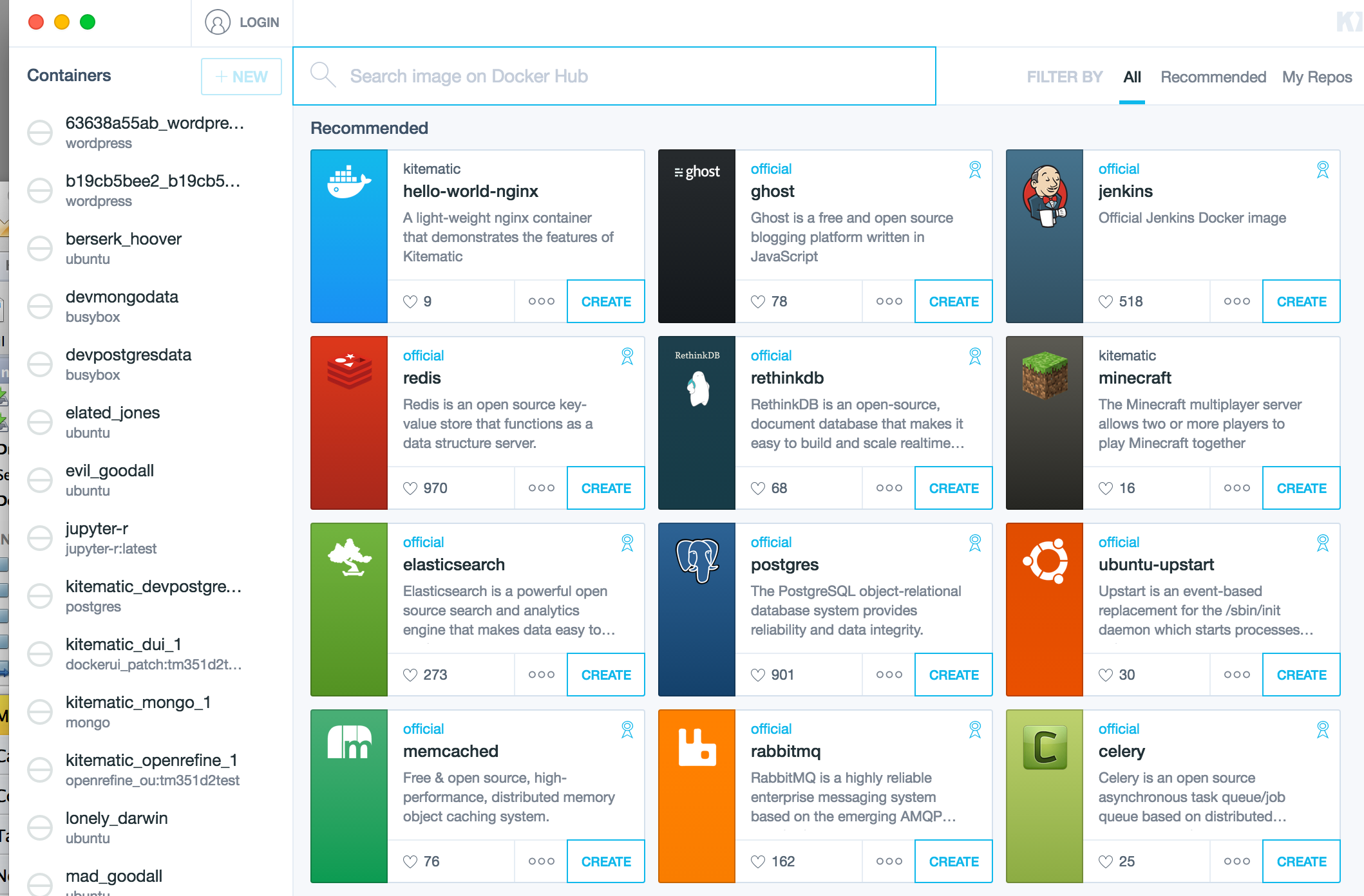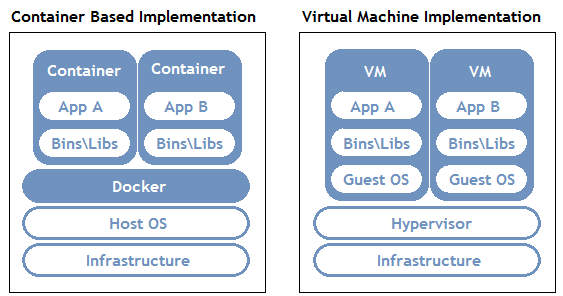

- #DOCKER MACHINE VS DOCKER FOR MAC INSTALL#
- #DOCKER MACHINE VS DOCKER FOR MAC WINDOWS 10#
- #DOCKER MACHINE VS DOCKER FOR MAC WINDOWS 7#
- #DOCKER MACHINE VS DOCKER FOR MAC DOWNLOAD#
To run Hyper-V, the hardware must meet below prerequisites:
#DOCKER MACHINE VS DOCKER FOR MAC WINDOWS 10#
Windows 10 or Windows Server 2016 professional or enterprise edition. #DOCKER MACHINE VS DOCKER FOR MAC DOWNLOAD#
You can download from Docker Hub repositories.īefore starting the installation, we need to check the system requirements. But this time, instead of using the oracle virtual box, we have used native Microsoft Hyper-V. It will still be going to run Docker on the Linux machine created underneath.

It replaces the Oracle virtual box with a native virtualization technique available on Windows that is Microsoft Hyper-V. Using the Docker Desktopĭocker Desktop is the newer technology being used for Docker on Windows.
#DOCKER MACHINE VS DOCKER FOR MAC WINDOWS 7#
It requires 64-bit OS and Windows 7 or higher with virtualization mode enabled in it.īut again, the docker toolbox is the original support provided on Windows to run Docker and its legacy solution for all the Windows OS that do not meet the required configuration.
#DOCKER MACHINE VS DOCKER FOR MAC INSTALL#
Just install the Docker toolbox executable directly on the Windows and start developing applications on Docker Containers. The above tools eliminate the need to deploy a separate VM to run Docker.

The Docker Toolbox provides us a set of lightweight tools. There are two options available for the Docker on Windows. However, users will get the opportunity to become familiar with the upcoming features. There are more chances of bugs, crashes, and issues to occur.
Edge: These versions consist of all new and experimental features of the Docker Engine. On the stable channel, there is an option to select whether to send usage statistics or not. Its releases are fully synced up with Docker Engine releases. Stable: As the name signifies, Stable edition is thoroughly tested and can be used in developing more reliable apps. The Docker Desktop community edition release comes in two flavors. To overcome this, we have Docker Desktop for Windows and MAC. It means we can’t use windows kernel (host) to run Linux containers or vice versa. Docker containers running on particular Operating System share underlying OS kernel. We will begin our learning with Community Edition. In contrast, the enterprise edition is a certified container platform that facilitates commercial users with add-ons features like image security, image management, orchestration and management of container runtime but at a reasonable cost. The community edition comes with a free set of Docker products. Docker Editionsĭocker mainly comes in two editions, the C ommunity and the E nterprise edition. Speed, security, and choice – all will be delivered to you which you need for designing and delivering of containerized applications available on your desktop.īefore jumping to the installation process, let’s have a basic understanding of its editions and releases. It allows us to create certified images and templates of our choice of languages and tools. Docker desktop consists of developer tools, Docker App, Kubernetes, and version synchronization. It is the easiest way to run, build, debug, and test the Dockerized apps.ĭocker Desktop comes up with important and most useful features such as fast edit-test cycles, file change notifications, built-in enterprise network support, and flexibility to work with the own choice of proxies and VPNs. Post-installation, we will also try to perform some of the Docker operations.ĭocker Desktop is a native desktop application designed by Docker for Windows and MAC users. We will learn the installation of Docker Desktop on Windows and Mac machines. This article gives you a fair understanding of the Docker Desktop for Windows and MAC users.







 0 kommentar(er)
0 kommentar(er)
